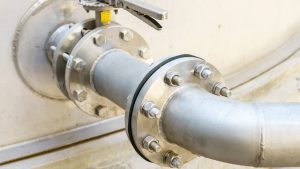Valves, which are essential for effective process control, are one of the most significant yet frequently disregarded assets in the process industries. The process would quickly grow too complex for the process operator to handle without reliable control valve operation. The typical process plant is built to be highly automated to offer secure operations with little involvement from operators. However, there is frequently a knowledge gap for certain assets. In general, plant operators have a thorough understanding of how a process plant runs. Operators are trained for and have a basic understanding of the mechanical systems that regulate the control valves, but this expertise does not necessarily extend to advanced electronics.
Advancing with AI and IIoT
- By altering the way plant maintenance is carried out on some crucial assets, one transformative result of this union of AI and IIoT technologies is a reduction in maintenance and operations costs.
- Industrial users can gather and store data from nearly anything at an extremely high frequency and an extraordinarily low cost using IIoT-enabled technologies and tactics. This makes it feasible for work and commercial operations to be more efficient than they were in the past.
- Some of the concerns that aid with reliability is addressed by operator effectiveness programmes or minor maintenance initiatives, but control valve maintenance is often the responsibility of the plant’s electrical or instrumentation divisions.
- The control valve digital information is known to site-resident or global reliability engineers who work for larger regional or worldwide industrial enterprises through AI and IIoT capabilities.
Be in Perfect Financial Alignment
Reduce Costly Maintenance
According to research, the vast majority of industrial asset maintenance is both mismanaged and expensive. Over 80% of the actual work done by maintenance and operating specialists is typically unneeded routine-based, expensive otiose repair or reactive maintenance. Numerous control valves are typically removed and overhauled during a turnaround or shutdown, according to studies. The valve is frequently left unchanged, and occasionally additional flaws are even introduced.
Reduce Downtime
To complement their platforms, top automation suppliers have created control valve asset management solutions. These programmes assist in preserving dependability and enhancing access to the data kept in the digital positioner. When implemented properly, these technologies can accurately estimate asset conditions, reduce downtime, or assist in preventing needless maintenance.
More Opportunities for a Fraction of the Price
To improve dependability, save costs, and require less physical space for valve rigs, some of the more sophisticated process instrumentation valve and fitting manufacturers include cloud-based technologies in their products. All of this creates fresh opportunities that were previously out of reach due to cost or complexity. The IIoT, which was made possible by the Industry 4.0 revolution, provides the means to connect valves and other components to the cloud and transition to digital systems. In the past, valves could only be manually opened and closed.
Introduce a Tight-Knitted Network
Instruments, sensors, valves, and other components that are networked together via intelligent software in industrial applications are included in the IIoT. As a result of component connectivity, there is a higher level of automation that enables data to be collected, exchanged, and analysed, enhancing productivity and efficiency while improving system control and lowering costs. IIoT-capable valves can recognise and transmit information about the fluids or gases that flow through them as well as the surrounding environmental factors, including temperature, humidity, and airflow.
Monitor and Detect Valve Failure
Through analytics, these IoT gateways can also be utilised to immediately identify leaks, bursts, or deviations from regular operations. These technologies use open platform-as-a-service (PaaS) to execute machine learning models on data streams from the valves to build solutions that are more and more valuable.
Modern asset management systems offer a thorough valve signature analysis when combined with digital positioner technology. Even while important, this is merely the first step in assessing the overall condition of the valve and associated parts. Most industrial businesses currently neglect this function and only carry out routine maintenance or repair of the control valve when a failure occurs. Failures would necessitate a more thorough examination of various data sets.
When monitoring and managing temperature, pressure, level, and flow in a process system, safety and accuracy come first. The effectiveness of the elements in the process instrumentation loop, from the tap to the transmitter, determines how effectively these properties are measured. An essential part of the system is the transmitters. To transmit it to a controlling or signalling device, they transform the digital signal generated by a sensor into a standardised instrumentation signal. Receiving correct inputs from the crucial elements that provide results to the transmitter is necessary for the transmitters to provide accurate readings. Regardless of the efficiency offered by IIoT, the performance and accuracy of the measurements that follow depend greatly on the initial design and layout of a system.
Today’s IIoT valves can remotely sense the material that flows through them as well as several environmental factors, including humidity, temperature, pressure, vibration, and more. Customers may get a precise and affordable measurement and monitoring capabilities from connected IoT process instrumentation valves by combining machine learning, edge computing, and the cloud. By connecting valves to intelligent software controls, it is possible to manage devices, analyse data, and visualise data in ways that have never been possible before, displaying parameters and historical information for each valve.
Outrun your Digital Platform with AI and IIoT
The IIoT of the future significantly incorporates deep-learning algorithms. Without the employment of learning algorithms for efficient day-to-day operations as well as long-term operation of the entire plant, a completely automated plant floor is not feasible. There are various AI/ML applications in mechanical domains, all of which go into great detail with specialised algorithms and data to be tracked for any particular industrial use case. AI processing and wireless technology are inextricably linked to sophisticated industrial automation applications. Therefore, the ability to unveil its potential benefits without automation and to be deployed without a shutdown is one of the revolutionary aspects of the IIoT.







